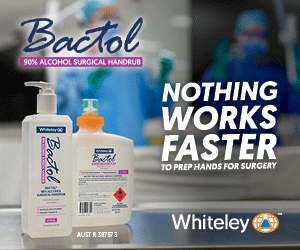The theme for this year’s International Nurses’ Day is Nurses: A voice to lead – transforming the next stage of health care. Announcing the theme, International Council of Nurses’ (ICN) president Annette Kennedy said the global COVID-19 pandemic had significantly disrupted health care but “there has also been significant innovation that has improved access to care. In 2021, we will focus on the changes to and innovations in nursing and how this will ultimately shape the future of health care”.1
COVID-19 has not overwhelmed the New Zealand health system with critically ill patients or led to a massive death toll. But it has led to significant changes in how nursing care is delivered and access to that care. It is interesting to reflect on how the pandemic has affected all health sectors, including nursing education.
COVID-19 had a significant impact in aged residential care (ARC), with the greatest loss of lives in that sector. This, in turn, has contributed to much tighter restrictions, with many facilities working under an alert level above that of the country/region, to manage risk.
A ‘trickle’ of IQNs
And the closure of our borders since March 2020 has drastically affected the availability of internationally qualified nurses (IQNs). The usually steady flow is barely a trickle and there is little relief on the horizon. This has major implications for all sectors – 27 per cent of our nursing workforce is made up of IQNs.
The management of COVID-19 has largely been based in the community, with testing stations and vaccination centres now a routine feature of the primary health care landscape. Many NZNO members have been employed specifically in this work; others have taken it on in addition to other work in the community, general practice and Māori/iwi and Pacific providers.
The emergence of managed isolation/ quarantine facilities (MIQs) has seen nurses and health-care assistants (HCAs) from other parts of the system seeking employment in MIQs – there are approximately 1500 nurses employed in these facilities. This has been at the expense of other sectors. This outflow has created additional staffing pressures in other parts of the system, as attempts are made to plug the gaps.
As the COVID-19 vaccination rollout gathers momentum, our members are both the vaccinators and the vaccinated. NZNO, along with other Council of Trade Unions-affiliated unions, supports the rollout and wants to ensure the public is well educated about it. Work is still being done to support “vaccine hesitant” workers and those declining the vaccine for medical or other reasons.
To deliver the vaccination to “the team of five million” in a timely manner is going to require about 2000-3000 nurses, who will form the bulk of the vaccinating workforce. Nurses are appropriately skilled and qualified and, for many, vaccination is part of their routine work.
To include lay vaccinators, ie non health professionals, in the vaccination workforce, as mooted by the Ministry of Health (MoH) last month,2 will require some law changes. There are many roles for those who are not regulated health professionals to support the rollout, without becoming vaccinators. More clarity on the MoH’s suggestion is needed before NZNO could support it. NZNO would want assurances that this is not a second-tier service aimed at already disadvantaged communities. It would also want to know the impact on regulated health professionals (mostly nurses) who will be legally responsible for those working under their delegation.
All this has added pressure to an already stretched workforce. And more nurses are being siphoned off to undertake key roles in COVID-19 management, but without their roles being back filled.
‘Significant challenges’
The admonition to “grow our own” nursing workforce has met significant challenges. During alert level 4, nursing students were removed from clinical placements and their education interrupted. While efforts have been made to make up for this loss of practicum and theory hours, some students have found the delays and the ensuing additional costs too much and have been unable to complete their studies.
Despite the provisions of the 2018 nursing accord, which were to protect new graduate places and ensure 100 per cent employment of all new graduates, we are still seeing only 80 per cent of new graduates employed within six months. And, anecdotally, there are fewer new graduate places available in DHBs this year.
Meanwhile, back in DHB land, the usual seasonal variation in patient numbers has not occurred this year, with many DHBs working above capacity over summer. Nurses in the sector have made clear their displeasure at the initial DHB multi-employer collective agreement offer. They are burnt out and overworked, with an alarming number leaving or intending to leave. It is high time nurses – the backbone of the COVID-19 response – are valued for their contribution. Their innovation in care delivery and improving access will, ultimately, contribute to shaping the future of health care.
References
- International Council of Nurses. (October 15, 2020). International Council of Nurses announces International Nurses Day theme 2021.
- RNZ. (April 15, 2020). COVID-19 vaccine rollout plan briefing with Bloomfield and officials.




